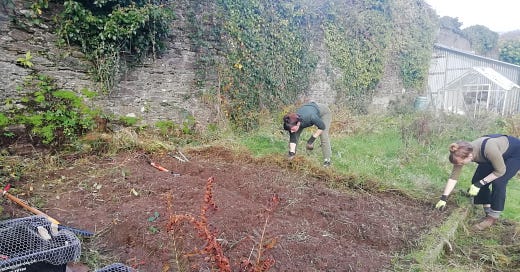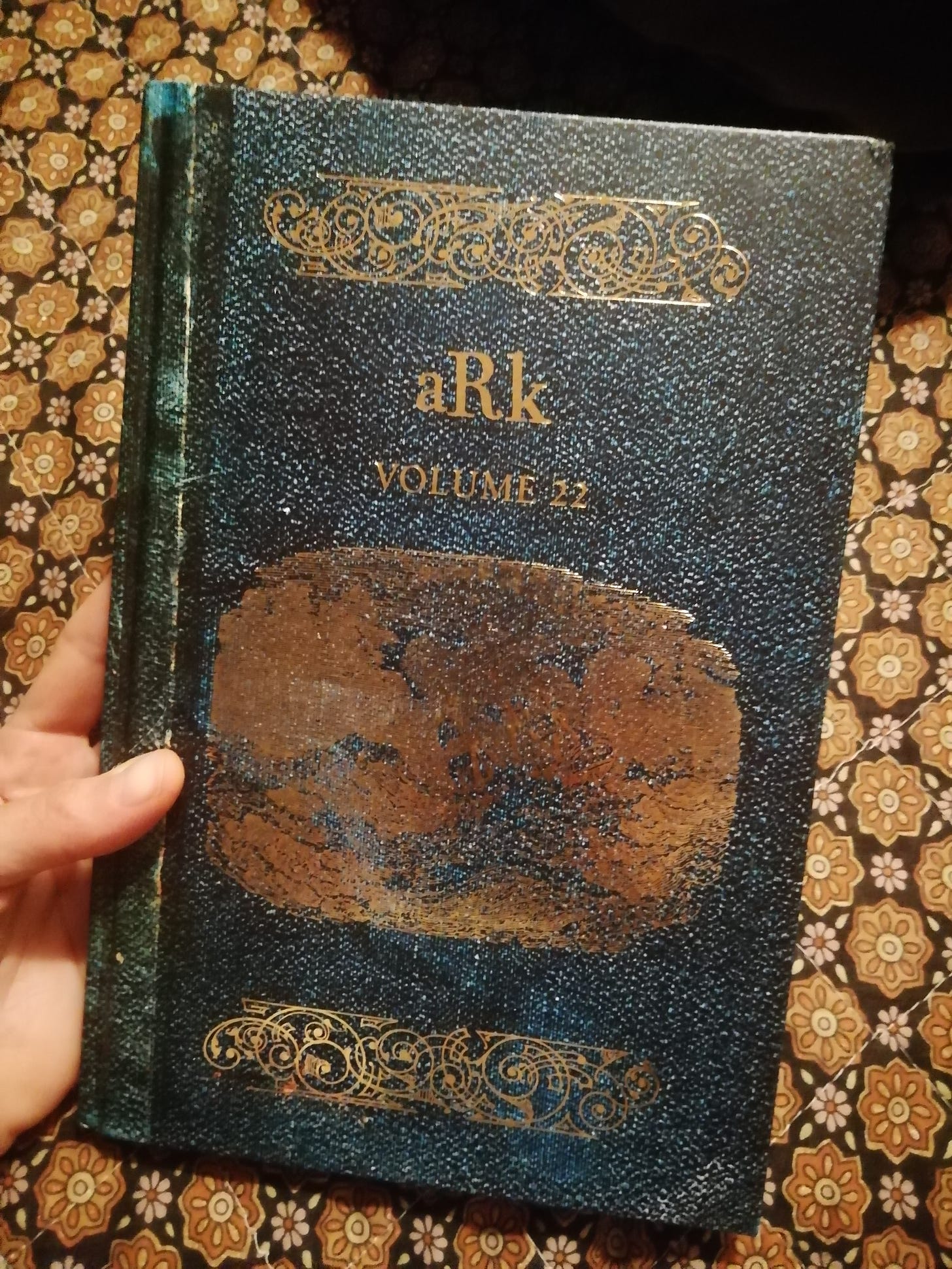We cleared some beds on Thursday to act as a temporary hold for unplanted trees. I have been told that some whips have been heeled in today. A whip is a young bareroot tree, usually about 2-4 years old and heeling in is the action of placing whips in a temporary home. Heeled in whips are often placed close together, soil is shoveled on top of the roots and compressed or “heeled” to hold everything together. The temperature is dropping and the rain has held off so the whips should be grand and snug until they are planted out into permanent homes. This temperature drop is good for planting trees. It signals the start of “bare root” season. It’s when all the energy of the tree goes to the roots which s good to get them established. Their are also less pests and diseases lurking and plenty of moisture to help the roots grow. Bareroot whips are a lot cheaper than potted trees and so it’s a great time of year to get planting.
Rachel and Jonelle peeled and pulled back carpets of grass. Their gloved hands ripped it from root, they forked and heaved docks and rocket and then we piled it all up. I worked on the brambles with a trimmers and secateurs.
Rachel was talking about hedge laying and Hedgerows Ireland (they have some courses advertised). I got to thinking back to this video I watched while studying permaculture and seeing the artistry in this 1942 film of a Northamptonshire hedge layer. Wouldn’t that be nice to see and wouldn’t it be a great job to keep you warm in the winter?!
Later, we went down by the house to sit outside and have tea. We read Totems of Enlivenment by Sanna Bjerg from Dark Mountain volume 22. This is a really good volume and I found it difficult to settle on a text. She writes:
The totems come alive when the things that meet animate that meeting by becoming a ‘communion of subjects’ rather than a ‘collection of objects’.
Those lines have stayed with me, and I have been thinking about how this animacy can be played out in a broader sense as a curator. I’m currently working on a group exhibition and looking to find new ways to describe how these processes I’ve been observing and interacting with might play out. It’s often difficult to find words. Sanna Bjerg’s words (and many others) show how artistic language can lift things away from human taxonomy to reveal the “other” as co-creator and an active agent in the realisation of work. The “other” being these objects which she now defines as subjects.
**********************************************
Next week I won’t be about at the nursery. So it will be the following week (Thursday 7th) when I will be back again.





